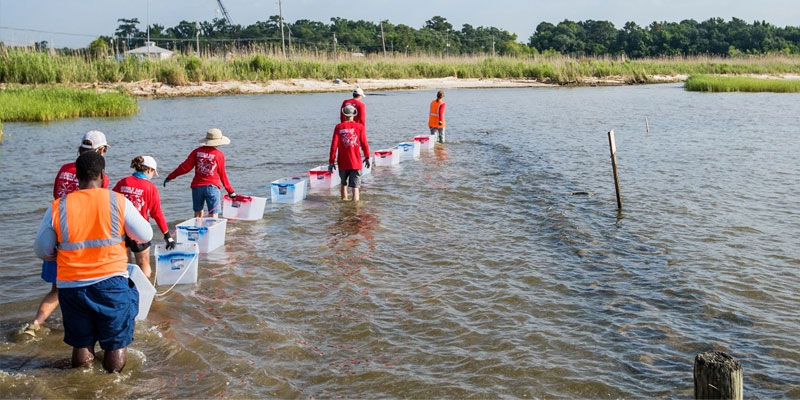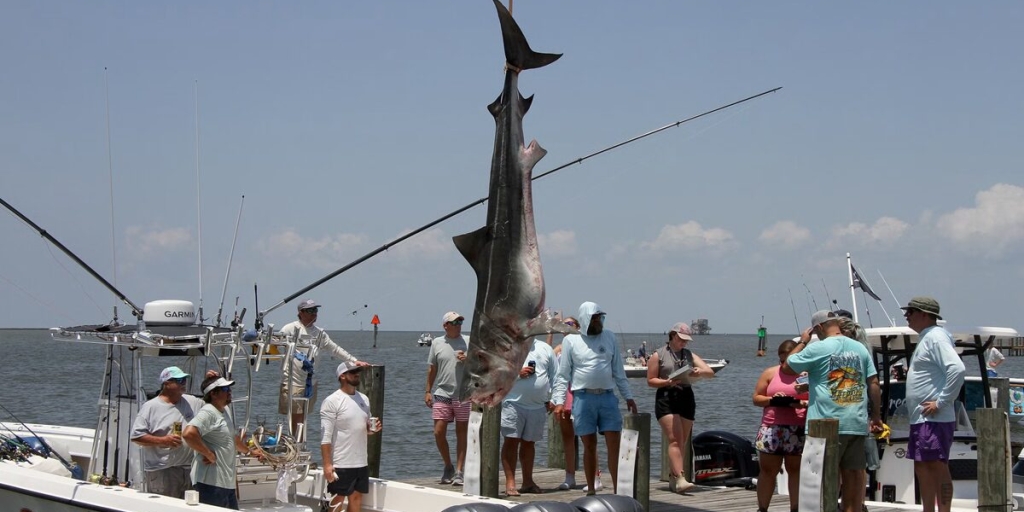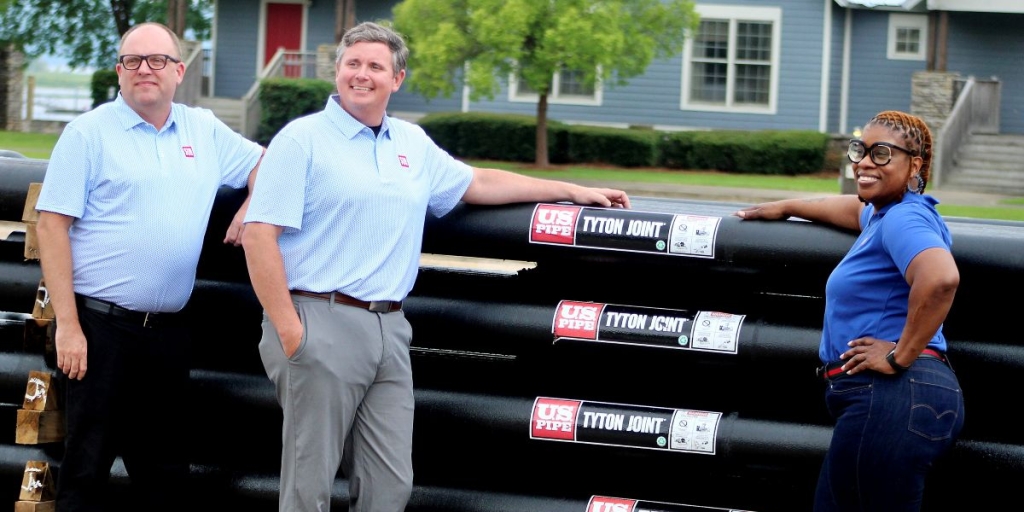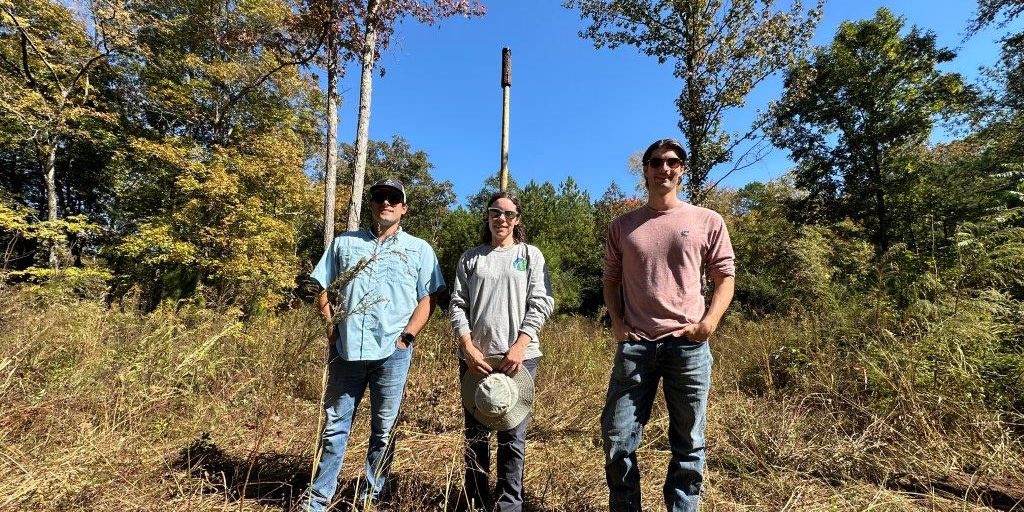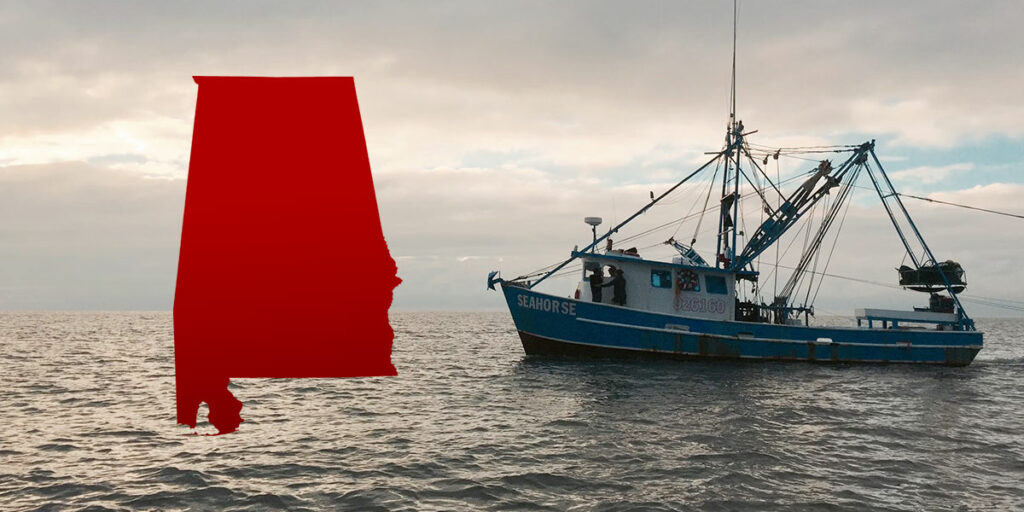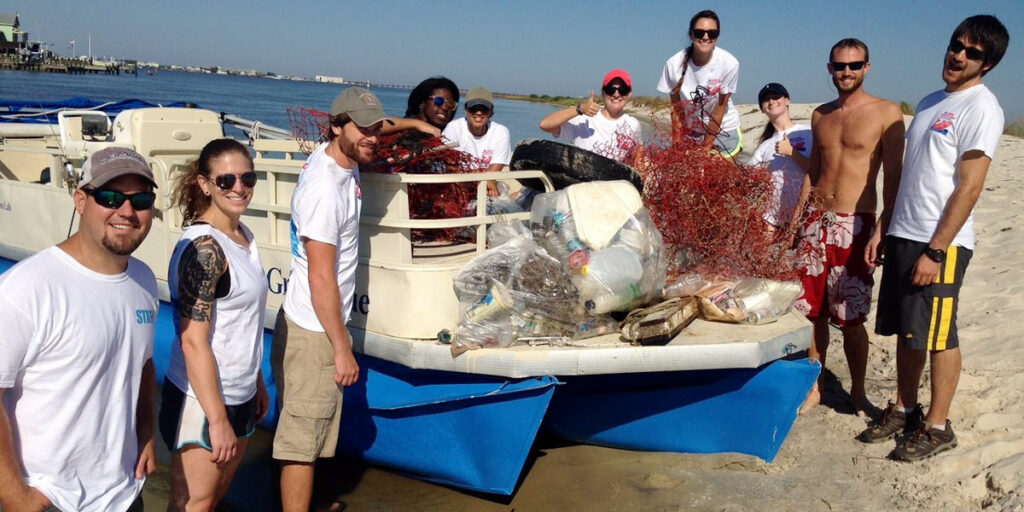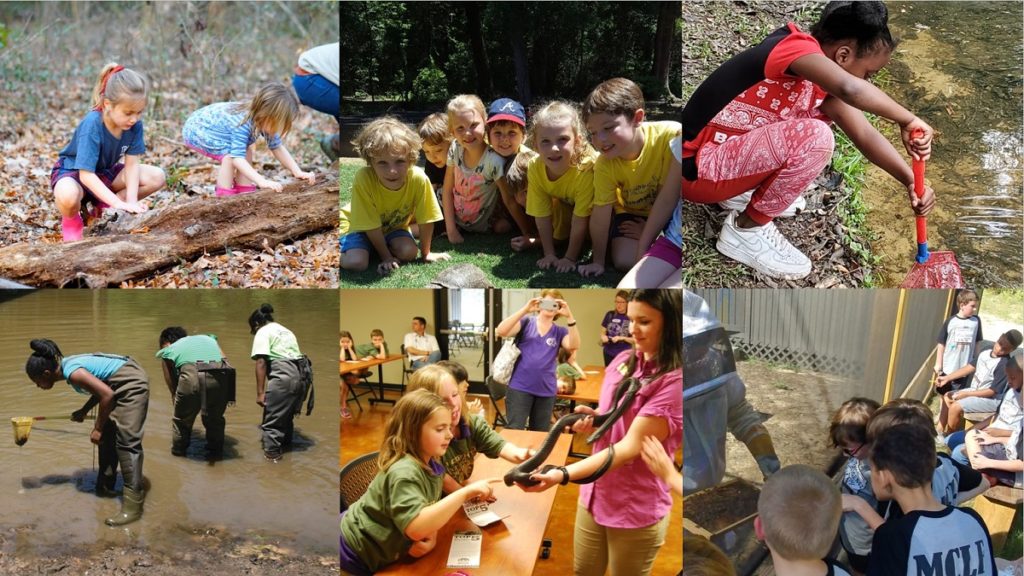The following is the latest installment of the Alabama Power Foundation’s annual report, highlighting the people and groups spreading good across Alabama with the foundation’s support.
If you were able to travel back a couple of hundred years and visit the edge of Mobile Bay near where Helen Wood Park is today, you’d see miles and miles of marshland, veined with tidal creeks and teeming with fish and other marine creatures that look to the safety of the marsh to spawn.
At low tide, there would be vast mounds of oysters around the edge of an estuary that was about 30 feet deep at its deepest point. The marshes and oyster beds of the past didn’t only serve as havens for creatures. They reduced the ability of storm tides to erode the mainland.
But a lot can change in a pair of centuries. The oyster reefs that used to encircle the bay have dwindled, and there is more ship traffic. As a result, waves eroded the marshes and shore.
“We’ve changed the dynamics of the bay,” said Judy Haner, marine and freshwater programs director for The Nature Conservancy, which is leading the charge in rebuilding Mobile Bay. “What we’re doing now is trying to give that shoreline a fighting chance. We want to help boost those habitats, not only for fish and birds and wildlife, but also to protect the shoreline from erosion.”
In this effort, the Alabama Power Foundation provided resources to build reefs in the brackish waters off Helen Wood Park, in Lourdes on the west side of Mobile Bay, and the Alabama Power Service Organization (APSO) provided manpower.
In May 2018, some 60 APSO volunteers – aged 12 to 70-plus – rolled up their sleeves, put on their boots and clamdiggers and went about the business of reef building.
In the past, The Nature Conservancy had attempted to build replacement reefs using bags of spent oyster shells – the same ingredient nature uses for reefs. But the erosive power of waves proved too intense, scattering the bags of oyster shells. Now, the conservancy opts to use “oyster castles” to construct new reefs.
Oyster castles are a relatively new way of constructing artificial reefs, using interlocking 35-pound concrete blocks. APSO volunteers developed a system using plastic “barges” to move the blocks along a human chain that snaked out into the rich brown marsh waters adjacent to a bridge over the Dog River.
Over the course of eight hours, the team of Nature Conservancy and APSO volunteers built seven artificial reefs.
“This was a new project for us,” said Erin Delaporte, an Alabama Power Customer Service manager in Mobile who is the APSO chapter president and coordinated the project. “It was a very labor-intensive day, but it was a wonderful day. It was tough work. I heard someone say they had worked eight hours on the project, but it took 48 hours to recover.
“It was worth it,” Delaporte said. “It was one of the most unique projects we’ve ever done in Mobile.”
As for the reefs, the positive effect was instantaneous.
“We wanted to restore the vertical topography of that reef and restore the waves, and you see that pretty much right away,” Haner said.
While there will be future scientific measurement of the growth of the reefs, native fish and crabs found them soon after completion of the APSO project.
For more information on the Alabama Power Foundation and its annual report, visit here.
(Courtesy of Alabama NewsCenter)




